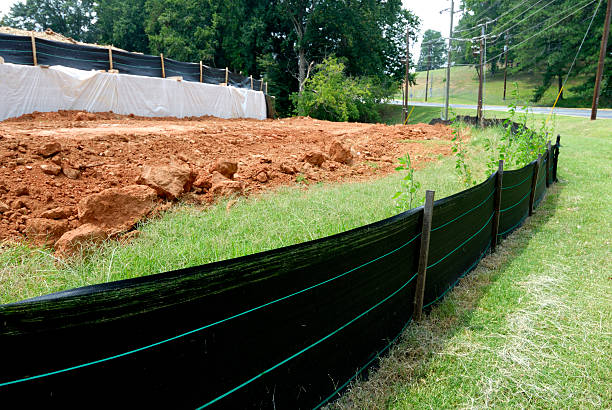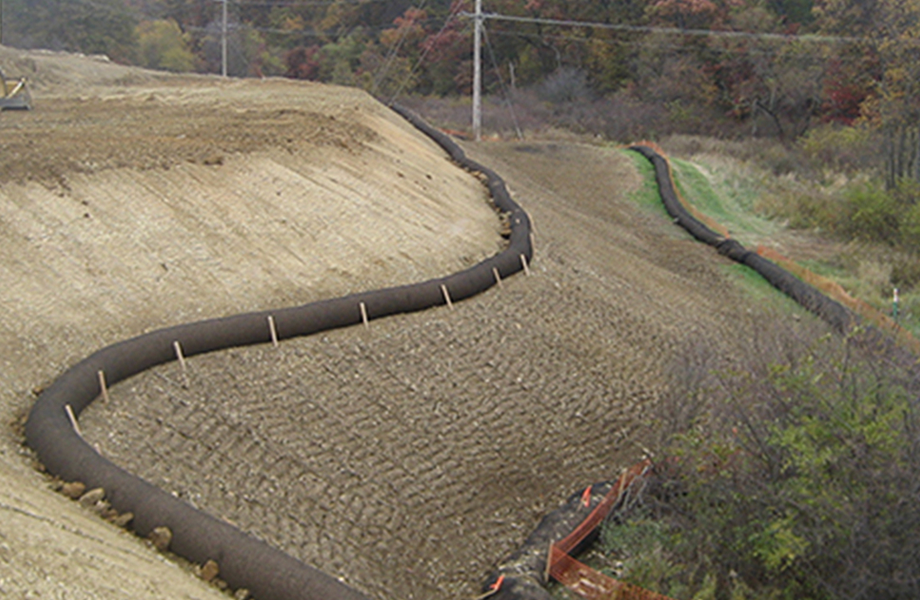Hydroseeding Solutions: A Greener Technique to Land Management
Wiki Article
Effective Disintegration Control Techniques for Sustainable Land Monitoring
Are you looking for methods to properly handle disintegration on your land? Discover the different types of erosion and their impact on your land, as well as all-natural techniques to regulate erosion. Discover how to carry out reliable disintegration control actions and ensure proper surveillance and upkeep.Significance of Disintegration Control in Sustainable Land Management
Erosion control is crucial for sustainable land administration since it helps stop dirt deterioration and loss. By executing efficient erosion control strategies, you can guarantee the lasting health and wellness and performance of your land. Without correct disintegration control measures, dirt disintegration can happen, bring about the loss of beneficial topsoil that is abundant in nutrients necessary for plant growth.One of the major reasons disintegration control is essential is because it aids to preserve dirt fertility. Furthermore, disintegration can lead to sedimentation in neighboring water bodies, which can adversely impact aquatic environments.
One more secret benefit of erosion control is the prevention of land degradation. By executing disintegration control techniques such as terracing, shape plowing, and the use of cover plants, you can aid protect against land destruction and maintain the health and wellness of your land.

Kinds of Erosion and Their Influence on Land
Comprehending the various kinds of erosion and how they impact the land can aid you carry out much better land administration practices. Erosion is the procedure through which soil, rocks, and various other products are slowly used away and delivered by all-natural forces such as ice, wind, and water. There are 4 primary kinds of erosion: sheet erosion, rill erosion, gully erosion, and mass movement erosion.When a thin layer of soil is gotten rid of evenly from the surface area of the land,Sheet disintegration occurs. This kind of erosion is commonly triggered by hefty rainfall or improper land monitoring methods such as overgrazing or logging. Rill disintegration, on the various other hand, occurs when small networks or rivulets are developed on the land because of the flow of water. This can happen on steep slopes or areas with compressed soil.
Gully disintegration is more extreme and occurs when larger networks or gullies are formed due to the continuous circulation of water. This kind of disintegration can trigger considerable damages to the land, resulting in loss of topsoil and vegetation. Mass motion erosion refers to the motion of huge quantities of dirt and rocks downhill due to the force of gravity. This can take place in the kind of landslides or slumping.
Understanding these various sorts of disintegration and their effect on the land is important for effective land monitoring. By implementing disintegration control strategies such as terracing, shape plowing, and reforestation, you can lessen disintegration and protect the integrity of the land. Furthermore, practicing great land administration strategies like correct crop rotation, preserving ground cover, and making use of sediment control actions can better aid in avoiding erosion.
Natural Disintegration Control Methods for Sustainable Land Monitoring
By executing all-natural erosion control approaches, you can efficiently handle and preserve the integrity of your land. One reliable technique is making use of vegetation, such as plants and lawns, to maintain soil and protect against disintegration. Growing indigenous types can assist increase origin thickness and bind the soil with each other, lowering the danger of disintegration triggered by heavy rainfall or wind (Memphis Erosion Control Solutions hydroseeding). Furthermore, mulching is an additional natural strategy that can help control erosion. By applying a layer of natural compost, such as timber chips or straw, you can protect the soil from the impact of raindrops, decreasing dirt compaction and overflow. Another natural disintegration control approach is contouring the land. By developing shape lines or terraces on slopes, you can slow down the circulation of water and enable it to permeate the dirt, minimizing disintegration. In locations where erosion is a substantial issue, mounting disintegration control blankets best landscape or floor coverings can be beneficial. These floor coverings are made of biodegradable materials and assist stabilize the dirt until greenery is developed. On the whole, by using these all-natural erosion control approaches, you can successfully take care of and secure your land from erosion, guaranteeing its lasting sustainability.Implementing Reliable Disintegration Control Measures

To effectively handle and shield your land from disintegration, you must take into consideration carrying out tried and tested techniques that can help alleviate the danger. One such approach is making use of disintegration control blankets. These coverings, made from artificial materials or all-natural fibers, are placed on the dirt surface to maintain it and prevent erosion. They help maintain wetness, decrease debris overflow, and advertise the development of vegetation. An additional reliable technique is using terracing. Terracing entails producing level platforms on sloping land, which assists to slow down drainage and avoid disintegration. It also permits the farming of crops on the terraced inclines. Additionally, planting plant life is an essential action in erosion control. Bushes, grasses, and trees have substantial root systems that bind the dirt with each other, reducing erosion brought on by wind and water. Installing sediment control actions such as silt fencings and debris ponds can help trap debris and prevent it from getting in neighboring water bodies. These procedures are especially crucial throughout building tasks. By carrying out these verified erosion control techniques, you can successfully protect your land and reduce the risk of erosion and its harmful effects.
Surveillance and Upkeep of Disintegration Control Techniques
When monitoring and preserving disintegration control actions, it is necessary to routinely evaluate the disintegration control coverings, terraces, vegetation, and sediment control actions to ensure they are functioning properly and effectively avoiding erosion (silt fences). By carrying out regular inspections, you can determine any type of issues or deficiencies in the erosion control techniques and take needed activities to rectify them
Beginning by inspecting the disintegration control coverings. Make certain they are securely anchored and cover the intended areas with no voids. Seek indicators of damage or wear, such as splits or revealed soil. Change or fix any type of damaged blankets quickly to maintain their effectiveness.
Next, examine the balconies. Check official website for indicators of disintegration, such as sediment buildup or irregular surface areas. Ensure that the terraces are correctly made and maintained to draw away water flow and reduce erosion. Clear any collected sediment to preserve their capability.
Assess the vegetation in the erosion control location. Make sure that it is healthy and appropriately covers the soil. Search for any indications of plant stress or condition, and resolve them quickly. Correct plants insurance coverage helps stop and support the dirt disintegration.
Lastly, examine the sediment control procedures, such as sediment basins or debris fences. See to it they are correctly mounted and operating as intended. Get rid of any kind of built up sediment and make sure that the controls are correctly kept.
Routine tracking and maintenance of erosion control measures are vital for their long-term effectiveness in protecting against disintegration and maintaining lasting land administration practices.
Conclusion
In verdict, you need to prioritize disintegration control for sustainable land monitoring. By recognizing the various types of erosion and their effect on the land, you can apply effective all-natural disintegration control techniques.Discover the various types of disintegration and their effect on your land, as well as natural techniques to control disintegration. There are 4 primary types of erosion: sheet erosion, rill low maintenance yard disintegration, gully erosion, and mass activity erosion.
By implementing disintegration control methods such as terracing, contour plowing, and reforestation, you can decrease erosion and protect the stability of the land (Memphis Erosion Control Solutions hydroseeding). On the whole, by making use of these all-natural disintegration control methods, you can successfully handle and safeguard your land from erosion, ensuring its long-lasting sustainability
By understanding the various types of disintegration and their influence on the land, you can carry out effective all-natural erosion control techniques.
Report this wiki page